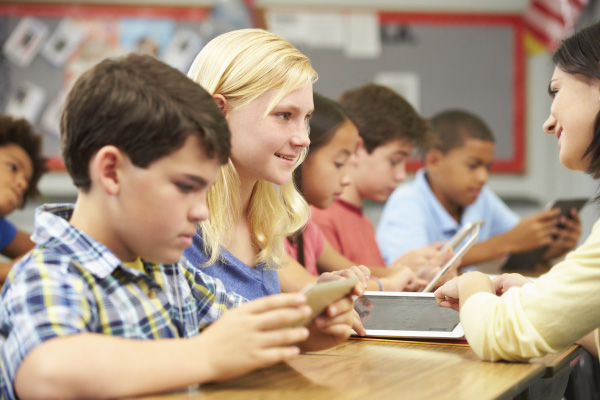Improving student engagement remains a primary goal for many teachers. Some use exercises and personal approaches with individual students. Others think ”flipping the classroom” is the best method. We have blogged about flipped classrooms before, but want to expand the conversation to a wider discussion about engagement.
To recap, in the “flipped classroom” model, students are introduced to subjects through videos, PowerPoints presentations, and other methods outside of regular class time. Ideas are then synthesized in class as students work through the concepts through reports, debates, and other methods.
In a previous blog post, Envision Chief Academic Officer Andrew Potter synthesized the flipped concept :
…[There are] two critical components in pursuit of the goal of student learning, not simply a different classroom structure:
- Personalized Learning – Pedagogy that can be individualized and differentiated, that empowers self-regulation of learning towards the goal of high achievement via multiple trajectories.
- Inquiry Based Learning – Exploration, questioning, and guided dialogue are the primary tools in this pedagogical approach as opposed to a pedagogy dominated by didactic instruction.
Moving from Passive to Active

The values of flipped learning are debated by many parties, but to the common goal is taking classroom learning from passive to active. However you choose to position it, this comes down to inspiring student engagement. If teachers want to go beyond technique for more active classroom learning, then perhaps non-traditional homework is the better method.
“Basically, we are looking to increase the volume of active learning by driving up student engagement and personal investment in the activity of learning,” said Andrew Potter. “Most forms of homework are designed to simply get students to provide the right answer. That’s not necessarily fun or creative.”
Instead, teachers may want to consider a flipped model to engage students, using some of the rich media tools that they are familiar with. One suggestion is to have them act as reporters on a subject and post on social media. This creates methods of research, exploration, and analysis that produces engaged learning via familiar media forms.
Other tools include creating PowerPoints, assigning educational experiences as homework, and exploring innovative ways of reporting information. The goal is to activate students in methods that will cause them to engage and grow.
One pedagogical method of absorbing learning is Bloom’s Taxonomy. Originated in the 50s, Bloom’s Taxonomy provided descriptions and a linear course for learning. In 2001, Bloom’s taxonomy was revised to included more dynamic and fluid forms of learning, with many subcategories of active learning. Bloom’s Taxonomy provides teachers a method of organizing their efforts.

Image from Vanderbilt University
“From a pedagogical standpoint, what does Bloom’s Taxonomy homework look like?” asked Potter. “How is homework designed to deliver understanding and retention? Though the path may not be linear as Bloom first theorized, the end goals remain the same.”
What do you think about non-traditional homework? Comment
background-image: a building with the American flag in front of it